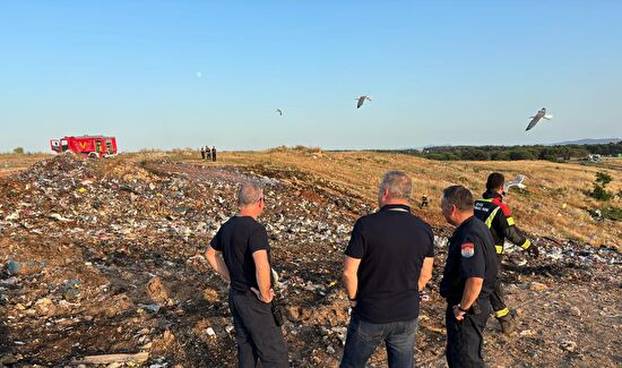His brightly colored instrument searches for fingerprints from exoplanets
/s3/static.nrc.nl/images/gn4/stripped/data130999164-e1be37.jpg)
In 1995, Swiss astronomers discovered the first exoplanet – a planet outside of our solar system. In the meantime, thousands of exoplanets later, scientists can conclude that almost every star has a planetary system. At the observatory in the French Haute Provence where the research was kicked off thirty years ago, an instrument will be built that can play a crucial role in this. The brain behind it: Casper Farret Jentink.
« My interest in measuring instruments started in high school, » he says. « On a Christmas market in Oldenburg, Germany, I bought a lump of stone whose seller claimed it was uranium ore. On eBay I found a building package to solder a geiger counter myself – the man turned out to have been right. » Farret Jentink later built a radio interferometer for solar observations in Groningen as a student in Groningen and designed the Aboras Sunny Incoop in Leiden. And then he ended up in the « fascinating » world of exoplanets.
The question of whether there is life elsewhere in the universe is busy. « If we find that, I think the impact on society will be very great. I hope that people will appreciate how special it is how life has developed here on earth, but that it is not unique. It is a young field that is driven by the development of new instrumentation. That makes it attractive for me. »
Farret Jentink applied for a promotion place at the Institute of Nobel Prize winner Michel Mayor, who discovered the first exoplanet. « I knew they are developing great instrumentation in Geneva. But every instrument starts with a question.« The question of Farret Jentink revolved around planets that lose their atmosphere.
A desert and a valley
Around six thousand exoplanets have now been discovered, in all shapes and sizes. Yet there are striking gaps. An example is the ‘Neptunus desert’: there are hardly any Neptune -like exoplanets in a short turn of career. A second mystery is the ‘jet valley’: the small number of planets that are one and a half to twice as large as the earth.
Possible causes of this are migration (planets shifting from Baan) and atmosphere evaporation. « Planets that are close to their star get hot. Their atmospheres turn off and can be blown away by the intense radiation. This allows Neptunus -like planets to lose their thick layers and stay behind as almost bald, rocky cores. » The jet valley can occur in a similar way: planets that are just below a certain size lose their gas layer and become smaller and poet.
This also happens on Earth: around 100,000 tons of the atmosphere in the atmosphere every year flies into space. And the ‘bare’ planet Mars used to have an atmosphere that made the surface a lot more pleasant – perhaps even livable. « A better understanding of atmosphere evaporation is therefore also necessary for the question of whether life exists elsewhere in the universe. »
Theoretical models show that the Neptune desert and the jet valley are caused by a combination of migration and atmosphere evaporation. To test this, a large study of exoplanets of this critical size is needed. But that is difficult: « It would take too much time on large telescopes, which are very competitive. » This created the idea for a small, but efficient instrument that is precisely tailored to the research question and fits a small telescope. « It will be the first instrument that is specially made for a large -scale study of planetatmospheres. »
The Near Infrared Gatherer of Helium Transits (Night) is a spectrograph who studies a small piece of the infrared spectrum that contains three spectral lines of Helium: a recognizable ‘fingerprint’ that leaves this substance in light. In the spectrographer, the planet light falls through a grater, which breaks it into different colors, including the ‘colors’ of Helium. « Helium is an ideal tracer for atmosphere evaporation: it is a light and volatile element, sensitive to radiation pressure. We can also observe helium in exoplanets from the earth’s surface, because it does not occur in our own atmosphere. For example, we can see with Night whether a planet has an atmosphere. »
Compete with large telescopes
What makes Night special is the efficiency. Traditional spectrographers achieve a maximum of 50 percent efficiency: only half of the light that comes in is measured. Night reaches 85 percent and can « compete with much larger telescopes, while the instrument is mounted on a telescope with a small mirror that catches less light ».
Farret Jentink was responsible for almost all aspects of Night. He worked out the research question, designed the optical system, applied for extra financing, arranged the purchasing of materials (« in Montréal we bought a second -hand infrared detector ») and coordinated the construction and testing of the Geneva instrument. Normally such projects are led by experienced researchers.
The finishing touches to Night was put by a graffiti artist, who gave the vacuum tank a colorful appearance-very unusual in the white-gray world of telescopes. In May the entire Santenkraam is loaded into a delivery van and Farret Jentink drives his team to the South of France. In the first year, the goal is to observe 35 planets, but that must become « hundreds. » « I find it very exciting. The moment of truth comes when we open the telescope and enter the first spectra. »

/s3/static.nrc.nl/wp-content/uploads/2025/06/08235751/ANP-529588170.jpg)
/s3/static.nrc.nl/images/gn4/stripped/data133399241-6ad92c.jpg|https://images.nrc.nl/ncsa3XBKuETlGYg_Wlr8cfgTTw0=/1920x/filters:no_upscale()/s3/static.nrc.nl/images/gn4/stripped/data133399241-6ad92c.jpg|https://images.nrc.nl/W4xDTlHc4KrgbA-HSnxicjrFiok=/5760x/filters:no_upscale()/s3/static.nrc.nl/images/gn4/stripped/data133399241-6ad92c.jpg)
/s3/static.nrc.nl/images/gn4/stripped/data133397414-025eb4.jpg|https://images.nrc.nl/JsdtEUV_tJ0-3GGTbIr3__hsEqU=/1920x/filters:no_upscale()/s3/static.nrc.nl/images/gn4/stripped/data133397414-025eb4.jpg|https://images.nrc.nl/CXU-MLAgsSWg4TuSisudmDxT7ec=/5760x/filters:no_upscale()/s3/static.nrc.nl/images/gn4/stripped/data133397414-025eb4.jpg)




